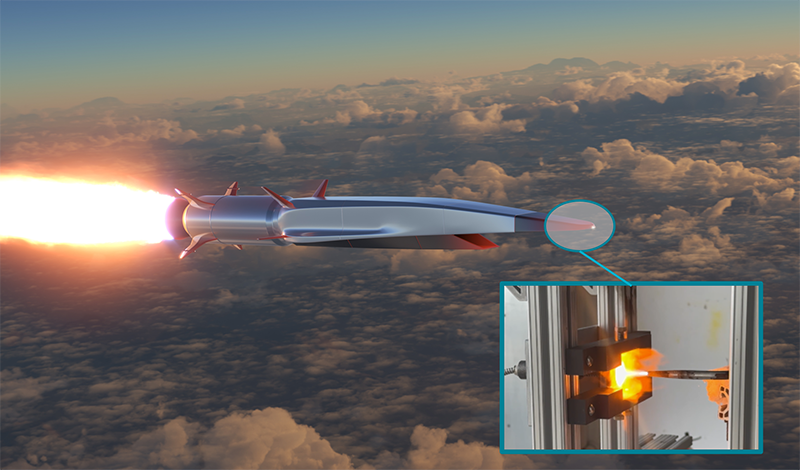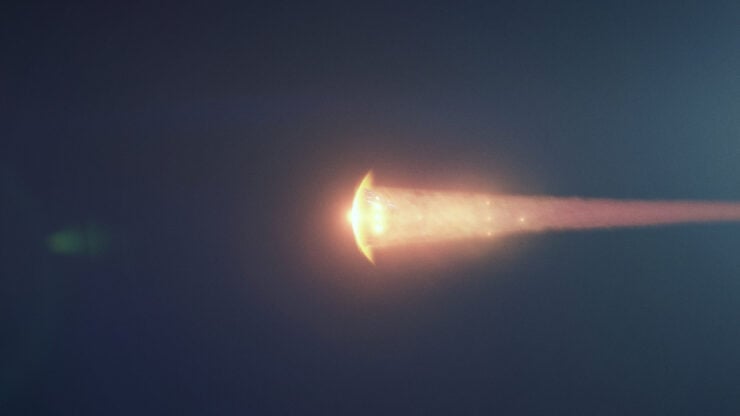When ISS astronauts return home, they have a hot ride back to Earth's surface. It's been that way since the beginning of human spaceflight to orbital space and beyond. The incoming vehicle uses friction with Earth's atmosphere to slow down to a safe landing speed. The "hot ride" part comes because that friction builds up high temperatures on the spacecraft's "skin". Without protection, the searing heat of atmospheric re-entry could destroy it. This same heating happens to incoming meteoroids as they whip through Earth's atmosphere.
As we move into an era of more frequent space missions, those trips will require reusable spacecraft. The vehicles will need skins that can withstand making that trip over and over. To solve the heating issue, a team of engineers at Texas A&M is working to create a spacecraft that sweats, using a concept called transpiration cooling.
What's Transpiration Cooling?
The idea is to develop and test 3D printed materials that "sweat out" a coolant gas while the spacecraft is screaming through the atmosphere, according to team leader Hassan Saad Ifti. He compared the sweating gas layer to a puffer jacket for space capsules. "Gas has a very low thermal conductivity," he said. "This is why a puffer jacket is so effective. It traps air in these pockets, so it is the insulation from the air keeping you warm, not the solid part of the jacket."
If engineers can create such an insulated layer, then the vehicle can be used many times. That's a vast improvement over the single-use shielding in use today. Right now, after each vehicle flies, insulating layers have to be replaced. That costs money and reduces the cadence of flights since shielding removal and replacement take time. More recent spacecraft, such as SpaceX's Starship, are using more advanced heat shields, but they are not yet completely reusable.
Sweating Isn't a New Idea
The concept of using gas as a protective layer has been around for decades. However, it was challenging due to materials cost and testing limitations. If space exploration is to accelerate, reusability is important. That was the concept behind the space shuttles. They were in the first vanguard of reusable vehicles. However, we're all familiar with their limitations - they were expensive to maintain, and turnarounds took longer than expected. They had great insulating tiles, but, as everyone learned from the loss of Columbia in 2003, the slightest damage to the tiles could be fatal.
During its final launch, Columbia's wing was struck by a chunk of insulating foam from an external fuel tank. That gouged out a hole in the tiles on one of the wing's leading edge. When the shuttle began its reentry at the end of the mission on February 1, 2003, the hole allowed heated atmospheric gases to enter under the heat shield. The heat destroyed the wing from the inside. That damaged the stability of the orbiter, and it broke apart as it raced through the atmosphere.
 *Photograph of a sample of a space shuttle wing leading edge following an experimental foam strike at the Southwest Research Institute. It's a good example of why incoming space vehicles need to be shielded from the heat of re-entry. Courtesy NASA/SWRI*
*Photograph of a sample of a space shuttle wing leading edge following an experimental foam strike at the Southwest Research Institute. It's a good example of why incoming space vehicles need to be shielded from the heat of re-entry. Courtesy NASA/SWRI*
That experience is seared into the memories of engineers and space enthusiasts looking forward to the next generation of space exploration and commerce. Hence, the development of safer "blankets" for incoming spacecraft. If the cadence of commercialization is to pick up in the coming years, that increased activity will require quicker vehicle turnaround times. Using sweated gas insulation removes the need for the old-style single-use heat shields. This could reduce the time between flights from months, as seen with the space shuttle, to a matter of hours. That's much closer to the turnover time of a passenger jet.
Developing the Sweaty Spacecraft
The team at Texas A&M is working with Canopy Aerospace on the "sweating spacecraft" insulation idea under a grant from the Air Force Small Business Technology Transfer program. That program provides funds each year to encourage small businesses and their partners to participate in R&D programs that have commercial potential. Since the era of space commercialization is coming, the money spent on the Canopy/Texas A&M program should push the technology for reusable spacecraft forward.
 A "sweaty" spacecraft concept drawing and materials testing at Canopy Aerospace.
A "sweaty" spacecraft concept drawing and materials testing at Canopy Aerospace.
This project will connect Canopy Aerospace's materials science capabilities with Texas A&M's state-of-the-art testing facilities and the aerospace engineering researchers' hypersonics expertise to overcome those limitations. "We are in a great position to bring together expertise on aerodynamics and high-speed testing to ensure this project succeeds," said Dr. Ivett Leyva, department head of aerospace engineering.
For this type of transpiration cooling to work well, the spacecraft's hull material must be strong enough to withstand extreme pressures yet porous enough for the coolant to sweat through. Canopy Aerospace has already developed the material — a 3D-printed silicon carbide. The team is getting ready to do wind tunnel testing of the first transpiration cooling prototypes using the Texas A&M Engineering Experiment Station's National Aerothermochemistry and Hypersonics Laboratory. That should help them understand the basic physics behind their creation. If it all works out, Ifti and the team hope to see sweaty spacecraft going to space as part of ongoing exploration and commercialization.
For More Information
Spacecraft That Sweat? A Cool New Way to Tackle Atmospheric Reentry
National Aerothermochemistry and Hypersonic Flight Laboratory
 Universe Today
Universe Today
